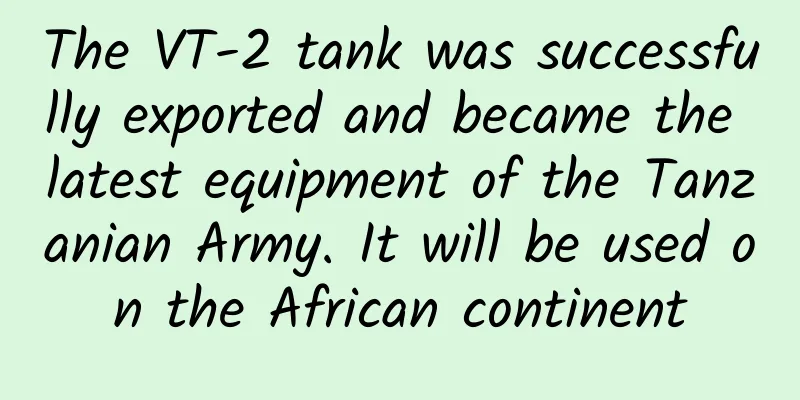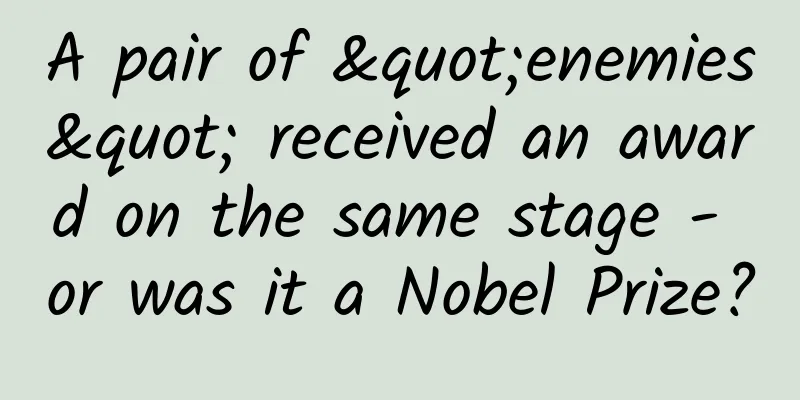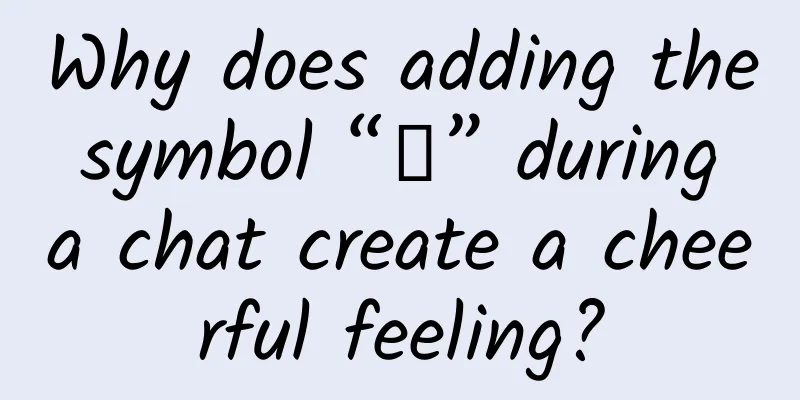Community operation: How can a community operate in the long term?

|
95% of communities seem to be unable to escape the definition of three months of silence. In fact, communities that can operate for a long time have something in common. Today we will talk about how to do a good job in long-term community operation . The following is a summary of the article’s ideas. The picture shows the directory navigation of all the contents: 1. Analyze User ProfileIn fact, the key to a community's long-term operation lies in the community operator itself. The community operator should analyze user portraits in the early stages of establishing the community. I think the concept of user portrait to community operation is like addition, subtraction, multiplication and division to mathematics and pinyin to Chinese. Therefore, analyzing user portraits is the most important step in community operations. All the methods and techniques explained later are based on the premise of having a good user portrait. So, what is the first step in analyzing user portraits? In fact, when we do user research, we should not make it up out of thin air, but use some methods to truly understand the users. Here I would like to share three methods with you: questionnaire survey, one-on-one communication, and big data analysis. 1. QuestionnaireLet's first explain the first method: questionnaire survey. This is also the most convenient and fastest way. When you know nothing about your users, questionnaire survey is a better way. Through questionnaire survey, we can have a general understanding of users, such as: gender, age, occupation, income, active online time, etc. However, there is a key point in conducting user surveys: try not to let users answer questions, but instead let them answer multiple-choice questions. Human nature is lazy. If the questionnaire is designed with only questions and answers, users may give up answering because they find it troublesome and will not want to pay attention to you. Therefore, the questionnaire design must take this into consideration. This is the design of the questionnaire. In addition, we can also complete the questionnaire through WeChat Moments in our daily life. This is a screenshot of a survey I conducted through WeChat Moments. Conducting surveys through WeChat Moments allows us to understand what users care about most. But this is not enough. At this time, we need to use our second survey method: one-on-one communication. 2. One-to-one communicationSome users interacted with you in Moments and answered your questions. However, this alone is not enough, we still need to dig deeper and understand them further, such as the reasons why they made such choices. For example, my first question asked them whether they preferred tea art class or tea knowledge class. For users who provide answers, I will choose to chat with them privately. For those who choose tea art classes, I will ask them why they don’t like tea knowledge classes and give sufficient reasons. For example, the water of tea is so deep now, and many people can’t identify tea, so why not choose tea knowledge classes? As for users who choose the tea knowledge class, I would ask them why they don’t like the tea art class, as there are many things to pay attention to when making tea. With this kind of questions, users will be willing to explain the reasons for their choices. Through this form, you can explore the deeper reasons for their choices and find out their motivations and needs for making choices. This way, you can get to know your users better. 3. Big Data AnalysisThe above methods are relatively commonly used, but relying solely on ourselves to ask questions is definitely one-sided, and some user needs are definitely missed. Such problems can actually be solved through big data analysis, so that we can have a more comprehensive grasp and understanding of the problems. To be more specific, we can use the Octopus crawler tool to crawl relevant data on Zhihu, and then we can do targeted analysis. For example, for tea-related issues, we can go to Zhihu to crawl tea-related questions, and focus on issues that have received more attention, because these may be the pain points of users. After catching the highly-popular questions, we need to look at the highly-rated answers and analyze what problems they solve. These may be what users want most. Finally, we also need to look at the highly-rated comments, which may reflect some of the users’ real thoughts. Of course, after completing this analysis, these data need to be implemented. Simply put, the analyzed data need to be verified through previous methods such as private chats and questionnaires. It should be noted that Octopus's data analysis requires writing crawler rules. If you find it troublesome to learn to write the rules yourself, you can go to Taobao and find someone to help you customize the rules. The prices are different for different rules. The price of the highly-rated answers I crawled above is around 100 yuan. Methods such as big data analysis can give us a deep enough understanding of users, and understanding users is also the basis for us to carry out long-term community operations. 2. Core Content of Community OperationOnce we understand the user portrait, the next key point we need to focus on is value output and emotional connection. 1. Emotional connectionTypical examples of emotional links are family groups and groups of relatives and friends. Everyone has his or her own family group. The links forwarded in these groups basically do not contain any useful information for you, but the group will not die because the members in the group rely on emotional links and everyone is willing to chat in this group. We can extend this to say that if you want to run a long-term community, emotional connections are essential. So, how can we establish a strong emotional connection? Here are three practical suggestions: (1) Chat more in the group The first way to connect with users is to chat more in the community. Of course, the chat here is not a simple chat, but to talk about topics that your target users often pay attention to (user portraits are used here). For example, young women may be more concerned about weight loss, so you can talk more about this and complain more about it, which will make it easier to resonate emotionally with them. When they feel that you have something in common with them and are the same type of people, they will naturally become closer to you. (2) Having a common goal In addition to talking more about topics that target users are concerned about in the community, you can also gather a group of people to work together to accomplish a task to build closer relationships with users. When a group of people has a common goal, the cohesion within the community is the strongest. Therefore, if a community wants to develop in the long term, it can find a goal that everyone is interested in and willing to participate in, and work together. For example, everyone insists on getting up early and punching in, working on a project together to make money, etc. Of course, some rewards need to be set up in this process, which can also stimulate people's interest and fighting spirit. Secondly, when establishing a reward mechanism, it is necessary to add some uncertainty. For example: After investigation, it was found that bonuses of different amounts are more attractive to users. For example, between prizes of 10 yuan and 50 yuan and prizes divided equally, users prefer the former and think they have a chance to get 50 yuan. Therefore, we can set up a reward mechanism with different levels of prizes, which will be more attractive to users. Finally, I would like to remind everyone that this kind of lottery can actually be operated internally. Some websites have sweepstakes that allow you to set winners, which can help avoid the cost of the grand prize. Of course, if you have enough budget, it is better to be as realistic as possible! (3) Offline meeting We often hear, "Chatting a thousand words online is not as good as meeting in person." That's right, meeting offline is the easiest way to build trust and one of the easiest ways to bring people closer together. You can be seen in person offline, rather than as a virtual image like a WeChat avatar online. Therefore, the best way to connect users in many regional groups is to increase the number of offline meetings, which will also increase user stickiness, so that many national online groups now also organize offline gatherings. 2. Value LinkIn addition to emotional connections, value connections are also very important in long-term community operations, because it is unlikely that hundreds of people in a group can be like friends. At this time, the significance of value connections is reflected. The value here is a broad concept, that is, what users want most. In other words, we can provide value based on users' pain points and needs. For example, in a community operation group, the value is the knowledge related to community operation and some of the latest industry news; in a fruit community, the value is to be able to provide cheap and high-quality fruit. Different groups have different value outputs, and this also needs to be determined based on their own user portraits. When there is value in the community, everyone will cherish it and will be active in it from time to time, so that the community operation can develop in the long term. So, what are the ways to output value links? Generally speaking, there are two ways:
These are some of the ways in which communities output value. Most friends learn in the community mainly through this method. Next, let’s talk about the community’s structure in community operations, which is our third part. 3. Community StructurePeople in a community are generally divided into four types. Only when these four types of people are present in the group can the group have a relatively healthy ecological environment.
1. Group owner and administratorThe group owner is the person who creates the group. The role played in the early stage of community operation and maintenance is very important, because in the early stage, members are not familiar with each other. The emotional connection and value connection mentioned above have not yet been reflected in the group. At this time, the group owner is needed to liven up the atmosphere, such as answering some questions to output value, and then keeping in touch with active members in the group, establishing emotional connections, etc. Sometimes, even water army is needed to cooperate with the group owner to complete the activeness of the community. 2. Great membersExpert members are those who know a lot and are willing to communicate in the group. They are the kols in the group and they are needed to impart knowledge to everyone in the group, answer questions from novices and so on. 3. The newbie who likes to ask questionsThis type of people are more interested in some professional knowledge, but they themselves know relatively little about it. Fortunately, they like to ask questions and will ask if they don’t understand. Many times, they and the top members contribute 80% of the chat content in this group. 4. The Silent MajorityThere are almost always many people in every group who don’t talk much, but they don’t leave the group. They just watch everyone communicate in the group silently and continue to absorb knowledge. The above are the four types of people that must be present in an active community. So. How can we mobilize the enthusiasm of the community? In fact, the key is to meet the needs of different people. We can sort out the needs of these four types of people: (1) Group owner The core need of the group owner is to keep the group active. (2) Master members Their needs:
(3) Newbies who love asking questions Their needs:
(4) The Silent Majority Their need is to acquire knowledge. Watching others chatting in the group every day and gaining knowledge from these chats is what they are most willing to do. By analyzing the needs of these four types of people, we found that the key to running a good community is to get the top members on board. Only when they are dealt with, there will be someone to answer the questions of newbies, the silent majority can also learn knowledge from the chat records, and the group owner's group will be able to operate. So how can we meet their needs specifically and make them willing to output knowledge in the group? Next, let’s talk in detail about how to meet the needs of great gods. 1) Satisfy their knowledge acquisition needs For the masters, they know a lot, but they also desire to make progress. They definitely do not acquire knowledge from newbies, but from other masters or group owners. Therefore, we must ensure that there are other masters in the group so that they can learn from each other and acquire knowledge from each other. One thing that needs to be noted is that the purpose of WeChat groups is one-to-many communication. If a person sends a message in a group just waiting for another person to reply, why doesn't he just add that person for a private chat? Therefore, the number of great gods must be greater than two. 2) Sense of Honor Everyone has a sense of honor and hopes to be praised by others. If you want the experts to be more active in the group, let them gain this sense of honor in the group. This can set some rules. Then, based on everyone's performance, we select some active people and give them some titles and rewards. They will also be very happy, for example, operating a deeply selected weekly high-quality IP. 3) Monetary Rewards The most effective way to keep people going for a long time is monetary reward. When the big names have something in mind from you, they will be more willing to come to your community. Relationships built on money are the most lasting and stable. Of course, you can also drive them with things they care about most, which is also very effective, such as fan exposure. For people who have a complete monetization path, traffic is money. They will be more willing to be given traffic directly than to be given a small amount of money. You can also analyze your own user portraits here to find out what they most want and use that as a reward to drive them. 4) Another important point is to establish a good emotional connection with them. You must build good relationships with the top members in your group. The reason is simple. If it is a group of friends, they will naturally take more care of you. You may not be able to be friends with everyone in the group, but you can still be friends with just a few of them. So when you are doing community operations in the early stage and find out who is the more talkative and knowledgeable person in the group, you should add him/her WeChat privately, chat with him/her more often, and bring you closer. 4. The process of building a communityFinally, let me tell you about the process of community operation: Generally, when we start community operations, we first establish a small group with no more than 100 people. The group owner then actively promotes activity in the group, and in the process constantly discovers expert members and newbies who like to ask questions and provides timely maintenance. When these 100 people form an ecosystem and a very good atmosphere has been formed, you can promote it, increase the number of people in the group, and continuously expand the dissemination. 5. Build community awarenessFinally, I would like to share with you two of my understandings about the community: (1) The value of a community lies not in the community itself but in its members. The community itself is a very abstract concept. The reason why some communities are very famous is because the community members are powerful, such as communities like Shengcaiyoushu and Qunxiang. The best way to attract powerful community members is to have good content. (2) A single tree cannot make a forest, and even a great person cannot build a high-quality community This point has been mentioned before. If you want to build a good community and an ecosystem, you need to find or discover multiple great people. In this way, it is easier to build a community with these great people as the core. Okay, that’s all I have to share today on how to carry out long-term community operations. If you have any questions, please feel free to ask. 6. Interactive Q&A Session1. The time of expert members is generally very valuable. How can we better connect with the experts when operating in a free group?Free communities need to improve the value of the community and make the group valuable to the expert members so that they are willing to spend time in the group. If the expert is working in the same field as you and there are people who are doing very well, then they will be willing to communicate in the group, willing to listen to the speeches of other expert members, and will also express their own opinions. In this way, the operation of the entire community can develop in a healthy way. 2. What are the methods for activating a dead group?
3. Is it true that the only way for a sales group to operate a long-term community is to continuously provide high-quality goods? What is the appropriate frequency for advertising in a social group that sells goods every day?If a community that sells goods is doing community operation, they can find a common point: If the products sold have some value output, such as beauty products, then everyone is concerned about how to put on makeup; if they are selling something pet-related, then everyone is concerned about how to feed the pet? Then you can use emotional connections to understand the user profile of the target audience, and then talk about the topics they are interested in. For example, if your target group is young women, then talk to them about recent TV dramas, variety shows, etc.; if they are in their thirties or forties, you can talk to them about buying a house, getting married and having children; if they are in their fifties or sixties, you can talk to them about issues such as taking care of children in kindergarten. Then there are communities that sell goods. The frequency of advertising is not the most important thing. Daily chats and activities are enough to let them know that your community is for selling goods. If your product has no value link, you must make a good emotional link so that you and your customer can become friends. Then naturally, they will think of you when they place an order. If your product is valuable, they will know it if you output the value every day. For example, if you sell wool yarn, then you can output something about cats every day, or even talk more about cat litter-related knowledge. They will be willing to listen, and they will also know that you sell cat litter. 4. How can educational communities improve group activity?The operation of educational communities can share some knowledge-related things every day to output value. Then, if they are really your target users and are interested in these educational things, they will naturally be active in the group. 5. What should we do if there is no expert member or newbie who likes to ask questions in the community? The group leader has been chatting alone for a few days. How long does it usually take to see results?In fact, it’s not that there are no great members or active newbies, but that they have not appeared in your group and you have not found them. In this case, you need the cooperation of the water army within your company, or you can even use a few WeChat accounts to chat in the group. All of that is ok. If the group is still inactive after following these steps, then you need to consider creating a new group and starting from scratch. Of course, this community must be operated by at least fifty or sixty people. Finally, there are some things that the group owner should do as mentioned at the beginning to make the entire community active. 6. Is there any method to operate a one-time consumption community? For example, how to operate a driving school community?If it is a community with one-time consumption and low average order value, a common practice is to look at group sales. For driving schools, the average customer spending is still relatively high. It is recommended to engage in long-term community operations, including maintenance and conversion, because things with high average customer spending cannot be converted in a short period of time after just one or two times. The above is all the content of this article. You can bookmark it and read it later. Author: Yasaki-senpai Source: Community Operation Research Institute |
<<: Advanced Sports Nutrition Baidu Cloud Download
>>: Peng Xinrong: The Art of Naming
Recommend
Google reorganizes secretive R&D department Google X: new logo unveiled
Google X is Google's previously mysterious re...
How much does the video of the African black mercenaries shouting cost?
The African black mercenaries shouting was shot b...
While celebrating the Spring Festival happily, there is one action that you should avoid - please be careful about squats!
The Spring Festival is the beginning of the cycle...
Java Reflection Best Practices
The examples in this article can be seen and down...
The secret of high ROI advertising—data analysis and optimization
To become an excellent marketing operator/growth ...
The cold wave is coming! Have the long johns you bought arrived?
This article was first published by Hunzhi (WeCha...
MWC2017 is coming soon: Why Nokia refused to use Android
Last month's CES2017 had at least one big pie...
praise! What were those articles with over 100,000 likes in 2017 about?
Liking is a silent expression. On the WeChat publ...
China Brand Day, the 25 most popular Chinese brands among the public!
Today, May 10th, is the second " China Brand...
How much does it cost to create a flash sale mini program in Bijie?
There are two types of Bijie flash sale WeChat ap...
Online event operation: How to make a "hot-selling micro-course"?
In this era of paid knowledge , whether you are a...
Nicolas Cage (Nicolas Cage) movie collection collection 20 high-definition English subtitles Baidu cloud download
Nicolas Cage Movie Collection 20 HD English Subti...
This article will teach you how to read cat expressions! No more fear of being scratched!
"Ouch! Come over here and look at this!"...
Why is it a false proposition that “everyone broadcasts live and everyone watches”
Live streaming is very popular, especially in Aug...
The underlying logic of advertising
Today, let’s analyze the underlying logic of adve...









